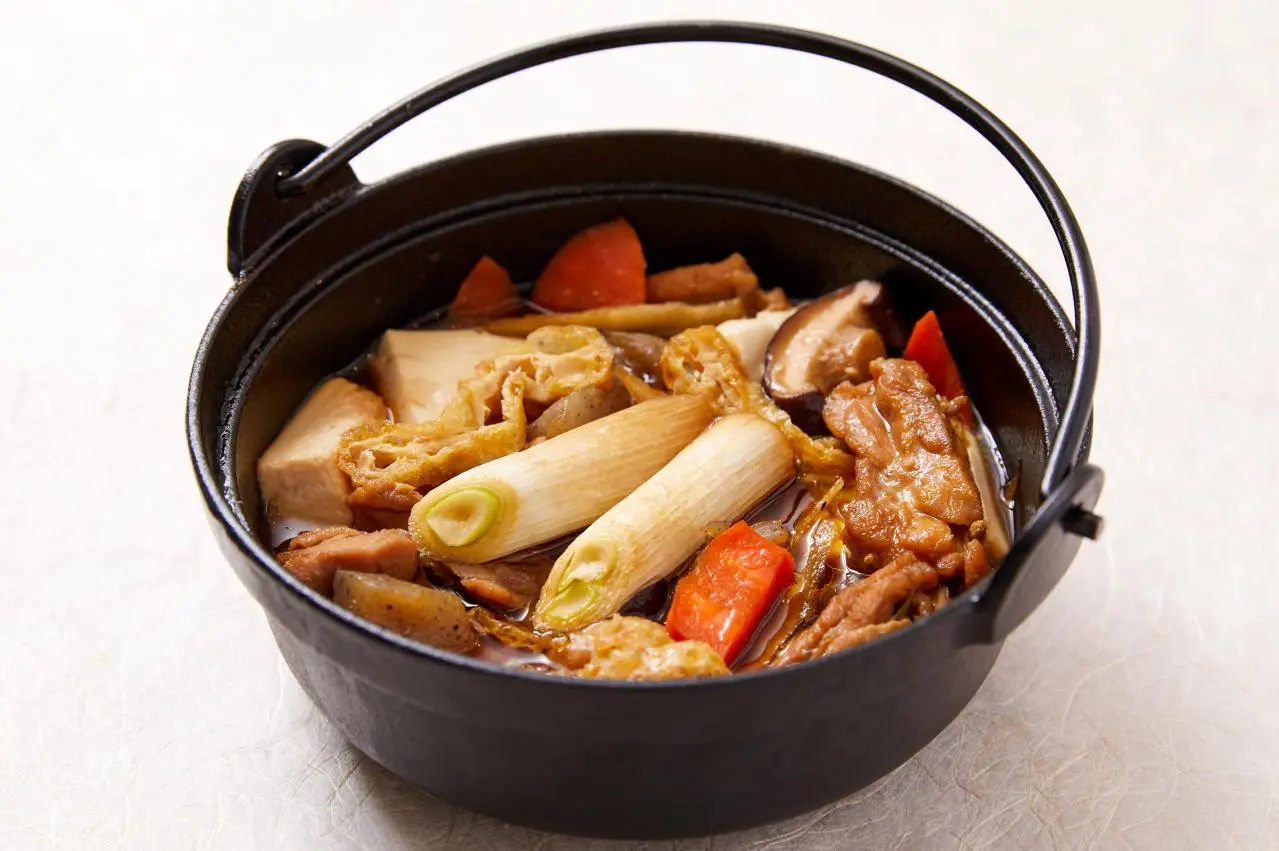Jabu
A heartwarming hot pot from Tottori, blending seasonal vegetables and chicken
Jabu introduction
Jabu (じゃぶ, Jabu) is a beloved traditional dish from Tottori Prefecture. This hearty hot pot is packed with chicken, tofu, and an array of seasonal vegetables, making it a comforting meal perfect for warming up during the colder months. The name "Jabu" is said to come from the sound of water bubbling and overflowing, "jabujabu," as the tofu and vegetables simmer together. Historically, Jabu was a special dish prepared in large pots for gatherings such as New Year celebrations, weddings, and funerals, during times when meat was a luxury. Families would use home-raised chicken or fish like dace caught during the winter season. Nowadays, it has become a year-round staple, celebrated for its ease of preparation, delicious taste, and nutritious value, often incorporating the freshest seasonal produce. Key ingredients of Jabu include chicken, tofu, burdock root, carrots, shiitake mushrooms, konjac, and green onions. Each ingredient brings its unique flavor and nutrients, combining to create a well-balanced and flavorful dish. Chicken provides high-quality protein, tofu is rich in plant-based protein and calcium, and the assortment of vegetables offers fiber and essential vitamins. Together, these elements make Jabu a nutritionally wholesome dish that supports family health. Jabu’s soy sauce-based broth has a delicate, soothing flavor, and adding ginger enhances its warming effect, especially in the chilly months. For an ideal pairing, light-tasting junmai sake or slightly dry honjozo sake complements the dish beautifully, enhancing its umami flavors and elevating the overall dining experience. Cherished as a family recipe for generations, Jabu is a dish deeply rooted in the local culture. It’s often served at community events or even in school lunches, and remains a treasured comfort food among the residents. Its simple yet heartfelt taste offers a glimpse into Tottori’s culinary heritage. Be sure to try Jabu prepared with fresh, seasonal ingredients and discover the warmth and charm of this traditional home-cooked delicacy.
Related videos
Other information
Tottori Other recommended dishes
Nabe dishrelated dishes
Kind of food
Tenpura Sushi Ramen Seafood Soba & Udon Okonomiyaki & Takoyaki Bento & Onigiri Don dish Nabe dish Yakitori & Kusiyaki Meat dish Local cuisine